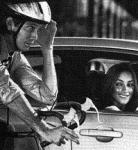There's a tool on one of the Stereophile test cds (number 3 track 10) that I've been using a lot lately both on my system and others. This used to be a left to right pan across my living room, but now I understand what they are demonstrating. JA is so far behind the speakers and to the sides it's remarkable (with variations based on microphone). Here's a description of what you should be hearing as it plays.
https://www.stereophile.com/content/...one-techniques



 Reply With Quote
Reply With Quote

 )
)




